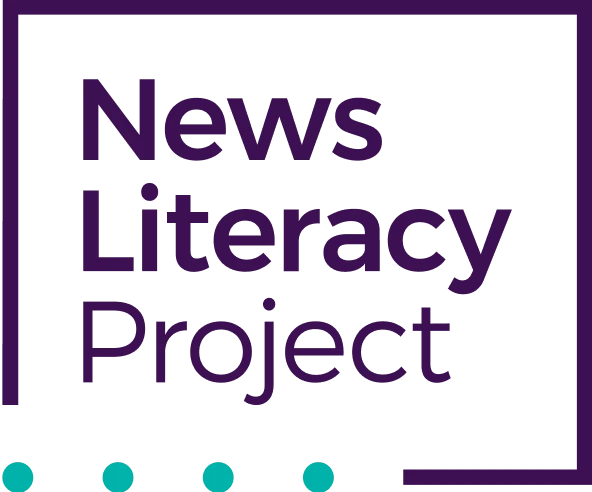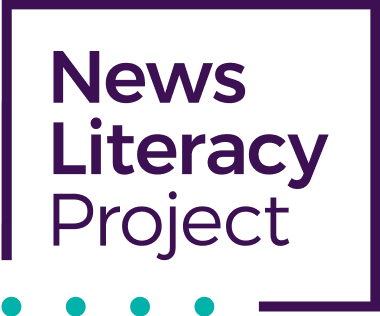Understanding bias in the news media
Scrolling through the comments on a news organization’s website or social media page reveals a widespread perception: Many people perceive bias in news coverage. Although, few people find that the news is biased in their favor.
Young people are no exception. Almost 70% of teens believe that news organizations intentionally add bias to their coverage and only present the facts that support their own perspective, according to the News Literacy Project’s survey of teen information attitudes, habits and skills, News Literacy in America.
During National News Literacy Week, the News Literacy Project’s Peter Adams led a webinar for educators that shared practical advice and tips to help students regain trust in credible news and to question faulty beliefs about news media bias that can lead to conspiratorial thinking. Here are some takeaways from Adams’ presentation, which provided educators tools to teach this vital, controversial and complex topic in ways that empower students to meaningfully evaluate the fairness and impartiality of news coverage. (View the recording.)
📉 Be wary of media bias charts and ratings
Some organizations publish charts or rating systems that show where they believe news sites fall on a political spectrum. Although the creators of these rankings claim to make bias within news organizations more transparent, Adams warns against taking the representations at face value. Rankings appear to offer a solution for people looking to “unbias, unspin or decode news coverage,” Adams said. But they imply that bias is present in every newsroom and that the creator of such charts is objective enough to discern how to quantify each news organization. Adams recommends taking a critical look before basing opinions about news coverage on these tools. Analyze not only how they represent different organizations, but the reasoning behind their conclusions.
Adams also notes the importance of differentiating between news reports and opinion pieces. On some media bias charts, opinion pieces are included in a site’s ranking. Opinion pieces, which are not intended to be impartial, should be excluded when assessing whether a site’s news reports are neutral and credible.
“It’s very attractive to think there’s an easy answer key.”
📢 Threats to the watchdog role of the press
The press plays an important role in holding powerful institutions accountable. Credible news reports and investigative journalism can expose wrongdoing, giving the public the information they need to make decisions for themselves. However, if people are quick to label news coverage as “biased” when it includes negative information about a public official or institution that they favor, credible reports run the risk of being dismissed as politically motivated or biased.
In addition to discrediting standards-based reporting, false accusations that watchdog journalism is biased also can disempower individuals. The ability to think critically about information is threatened if individuals can dismiss any coverage that challenges their beliefs as biased. Furthermore, if students believe that no news is trustworthy and that every outlet inherently spins information, they will lack confidence even in credible information.
“If the press exposing corruption for someone that you might support counts as bias in your book, then they really can’t play that watchdog role.”
🪄 A rabbit hole of conspiratorial conclusions
Perceptions of news media bias can quickly turn into conspiratorial assumptions about a news organization’s secret motives, Adams said. Young people are especially prone to conspiracy theories, which offer compelling, exciting narratives to explain issues that are rarely clear-cut.
To guard against this way of thinking, it is important to question the validity of the discourse around news media bias. How much of it is driven by misperceptions or opportunism? Is bias in news always intentional, or might it be implicit and inadvertent?
“When there’s no obvious or discernable bias, people still often perceive it. And these perceptions can quickly give way to assumptions about motives that border on the conspiratorial.”

Bring these tips to the classroom
To help students develop a responsible approach to news media bias, introduce them to the types of bias. Using the News Literacy Project’s free “Understanding Bias” lesson on the Checkology® virtual classroom, students can learn about five types of bias and five ways it can manifest itself, as well as methods for minimizing it. Don’t forget to download our infographic: In brief: News media bias.
Register now to access “Understanding Bias.”





